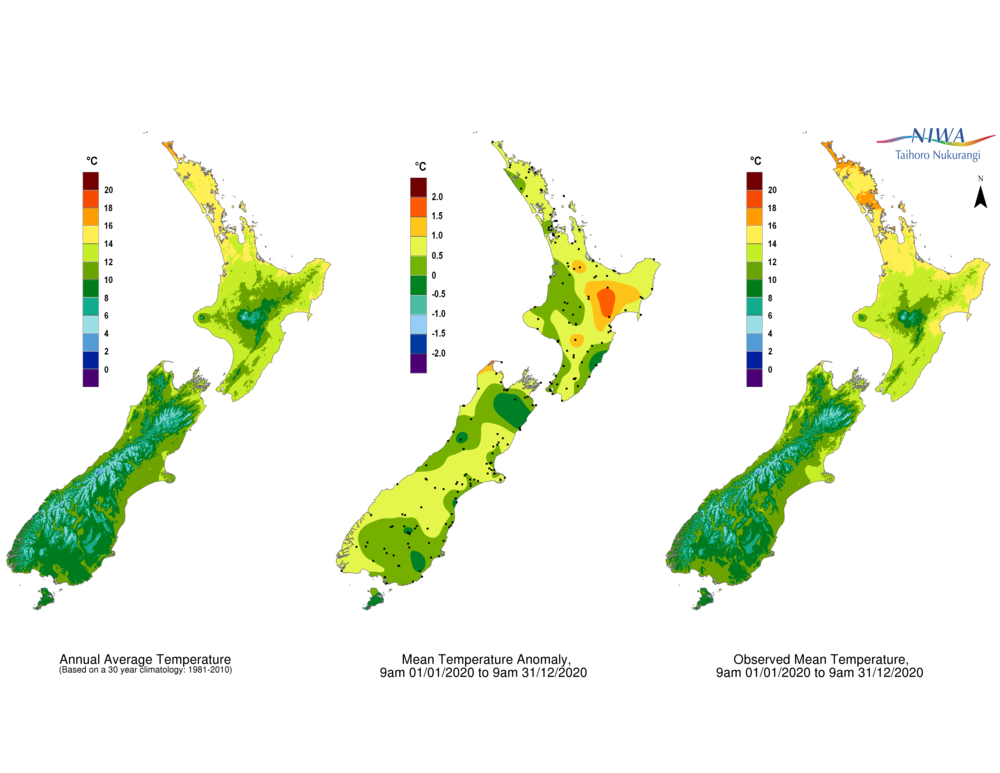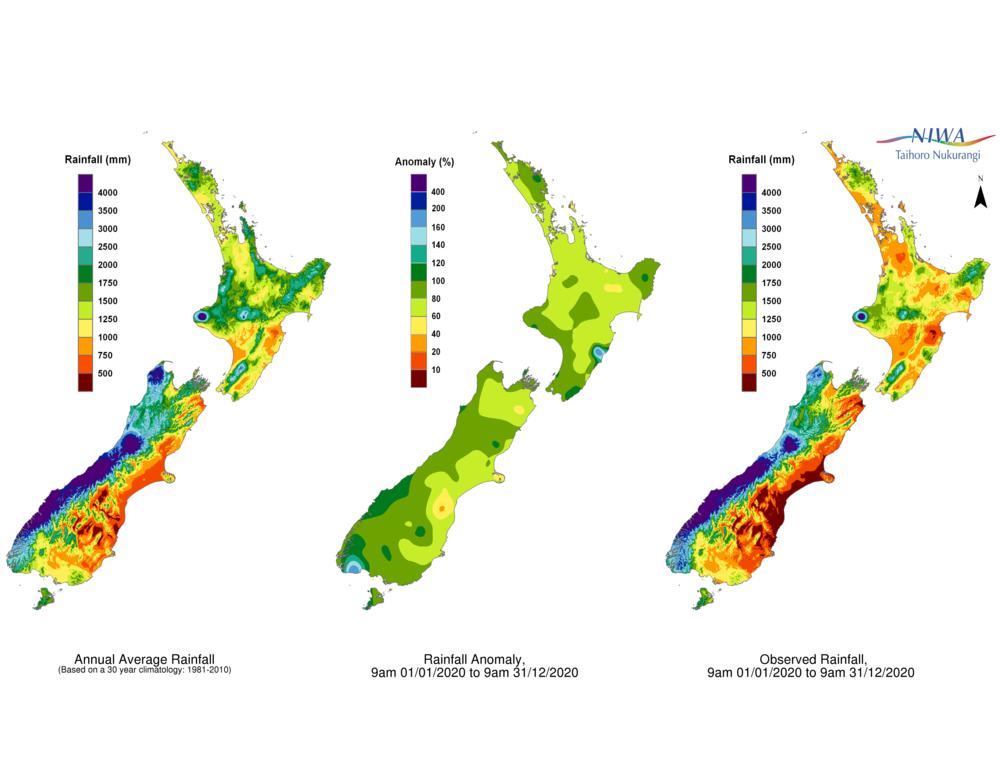Dryer, hotter year in Southland despite 1 in 100-year flood
Lucy Henry
13 January 2021, 12:56 AM
 February's floods belied the fact Southland had a drier than normal year in 2020. This image is of floods in Gore. PHOTO: Environment Southland
February's floods belied the fact Southland had a drier than normal year in 2020. This image is of floods in Gore. PHOTO: Environment Southland Southland recorded slightly dryer and hotter weather on average in 2020, despite significant flooding in February, according to the National Institute of Water and Atmospheric Research (NIWA).
NIWA released its annual climate summary for 2020 on Tuesday (January 12), showing Southland was in line with the national trend of warmer temperatures all round.
NIWA forecaster/science communicator Nava Fedaeff said “nowhere in the country had below average temperatures.”
Advertisement
Advertise on the Southland App
New Zealand had its seventh warmest year on record and of the eight warmest years, six have occurred since 2013.
According to NIWA, Southland typically has afternoon temperatures reaching between 18°C and 22°C in summer, and overnight temperatures falling to between 0°C and 2°C in winter.
Inland areas of Southland typically record higher daily maximum temperatures in summer and lower daily minimum temperatures in winter compared to areas nearer the coast.
Last year in Invercargill, temperatures were slightly above average, with the two NIWA weather stations in the city recording temperatures 0.5 and 0.6 degrees higher than average.
Invercargill also had a milder winter than usual with temperatures 0.7 degrees above average. It also saw 1841 hours of sunlight for the year.

Annual temperature data. GRAPHIC: NIWA
Western Southland, specifically Fiordland, had higher than average temperatures and eastern Southland saw the least increase with its temperatures near the average.
The nationwide average temperature was 13.24 degrees, 0.63 degrees above the 1981-to-2010 annual average.
Te Anau had its warmest night since NIWA records began there in 1972, with the temperature not dropping below 16.1 degrees all night.
On February 3rd, 2020, 509 mm of rain fell in Milford Sound in just one day – the equivalent of more than a month’s rain in a day.
This caused huge flood damage in parts of Milford Sound and heavy rain for most parts of Southland, triggering a state of emergency in the region.

Annual rainfall data. GRAPHIC: NIWA
Despite the severity of the event, Ms Fedaeff said it only the fourth highest daily rainfall recorded in Milford Sound since records began in 1929.
She said on average, 2020 was actually a dryer year than normal for Southland, which had about 80-100% of normal rainfall, which NIWA considers to be “near normal” levels, she said.
She said the heavy rain in Milford South and other parts of Southland in February was caused by a low-pressure system that brought extreme rainfall to that area.
Although because of climate change, NIWA is expecting extreme rainfall events to become more common and more extreme.
Ms Fedaeff said this is largely due to the fact a warmer atmosphere can hold more moisture and the oceans can provide more fuel to the system, as the water evaporates.
“It’s not to saying that [the February floods] was caused by climate change, but the thing with climate change is it’s the background state…”.
“Although these [flood events] are rare, they do happen from time to time,” she said.
Advertisement
Advertise on the Southland App
Environment Southland policy and planning manager Lucy Hicks said the regional council would spend some time reviewing and analysing the NIWA report in depth, before making any decisions.
“The council is in the process of developing a climate change strategy, and we will take into account all new information during this,” she said.
NIWA’s expectations for Southland’s weather in January- March 2021
Ms Fedaeff said NIWA is expecting above average temperatures over the next three months across Southland, as well as the whole country, with rainfall expected to be near or below normal.
There might still be the “odd heavy rain event,” she said, but the overall the weather will be dryer and hotter.
“The big reason for the is we have the La Niña at the moment which is a climate driver, and La Niña is often associated in New Zealand with more north- easterly winds, so it doesn’t really favour a more westerly flow,” which is the country’s usual wind pattern.
West Coast, Alps and foothills, inland Otago, Southland:
There is a 60 per cent chance that temperatures are very likely to be above average and a 40 per cent chance that rainfall totals are about equally likely to be below normal or near normal (35% chance).
NIWA predicts soil moisture levels are most likely to be below normal (45% chance) while river flows are about equally likely to be below normal (45% chance) or near normal (40% chance).
ACTIVITIES & ATTRACTIONS



